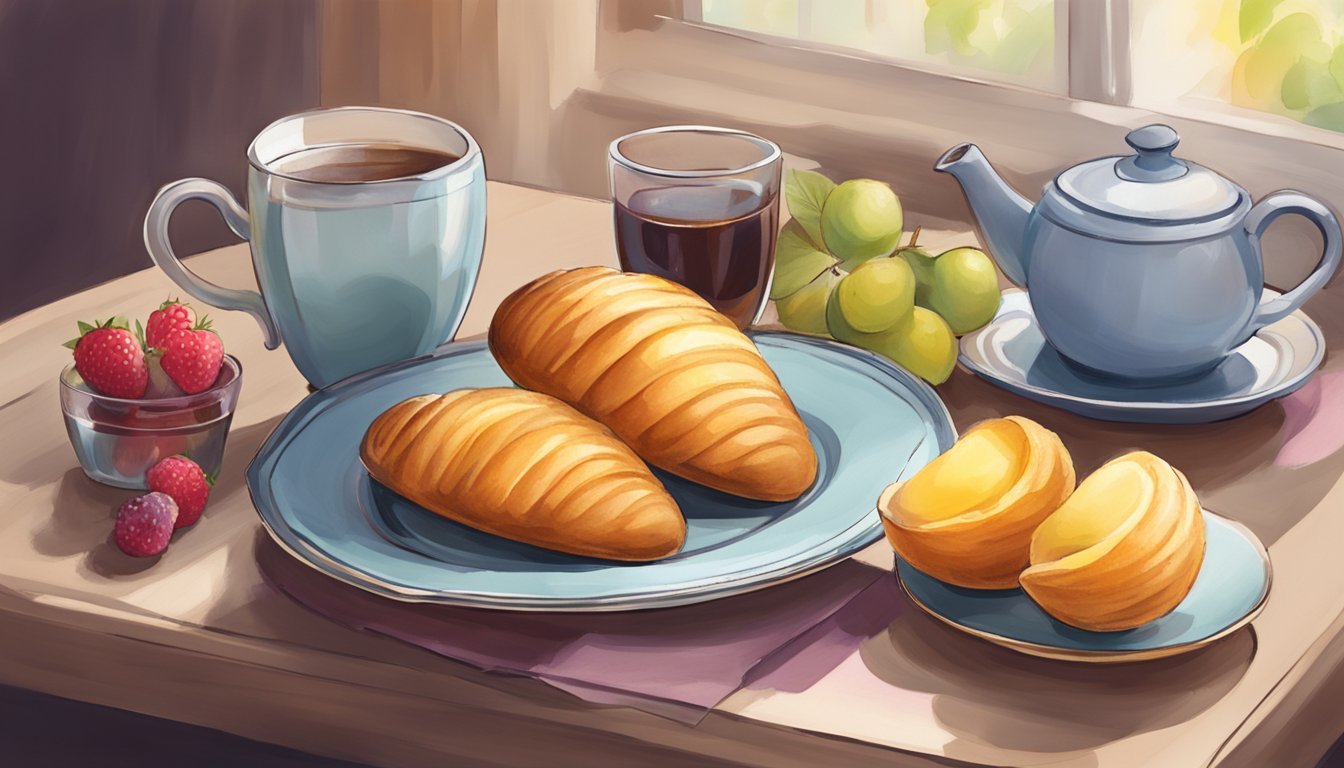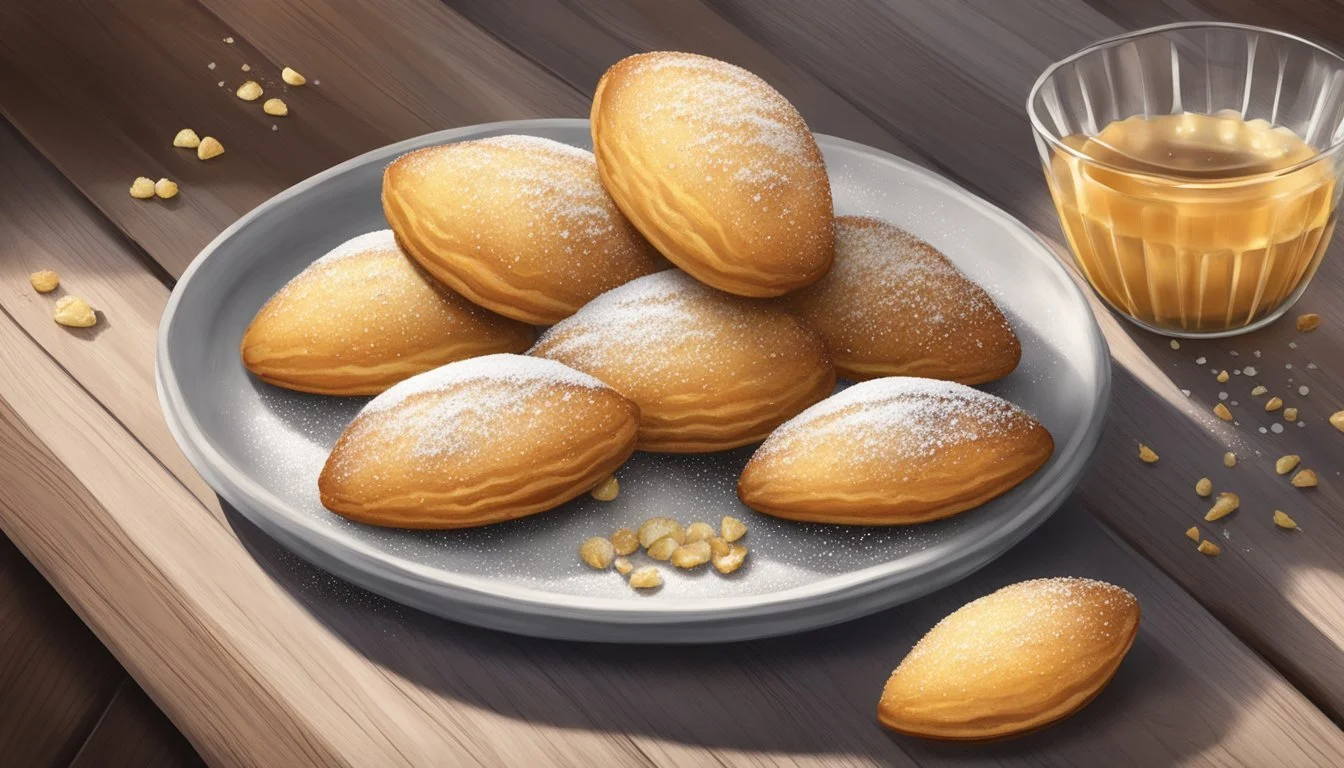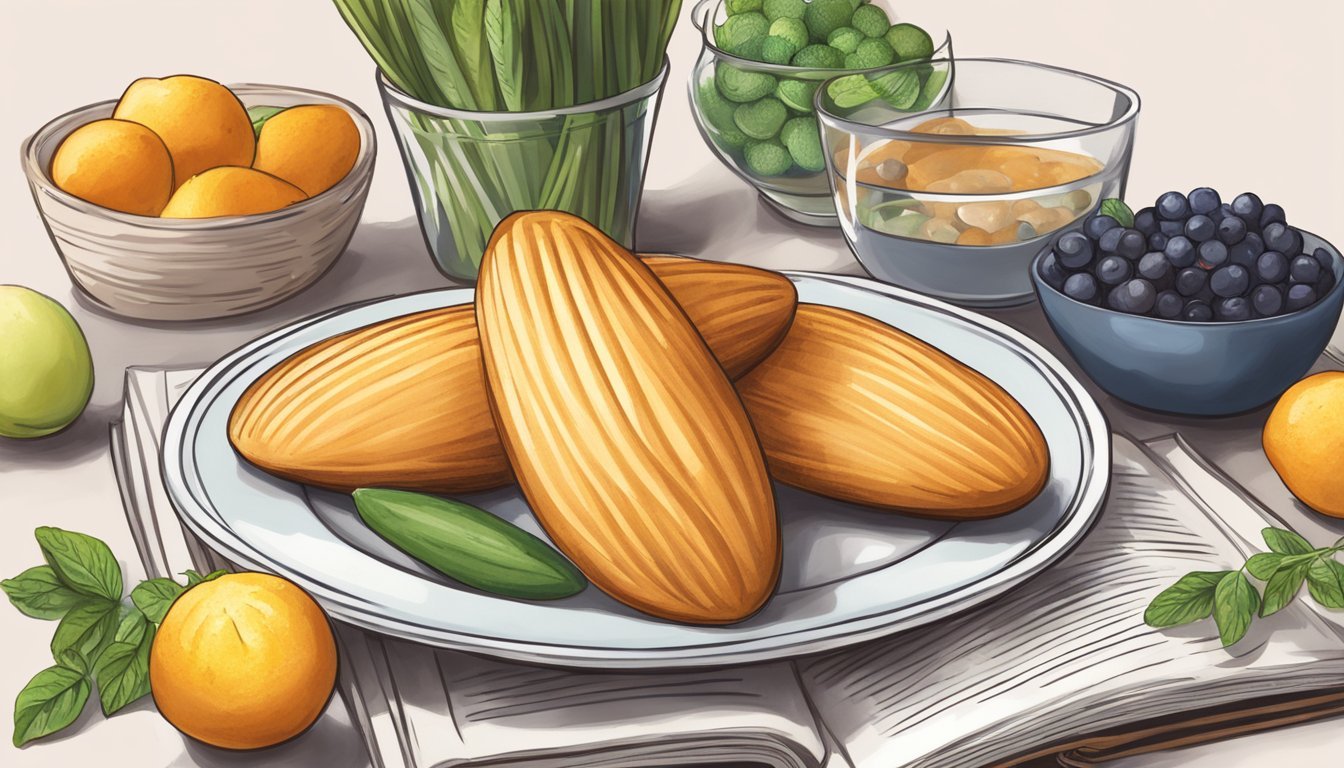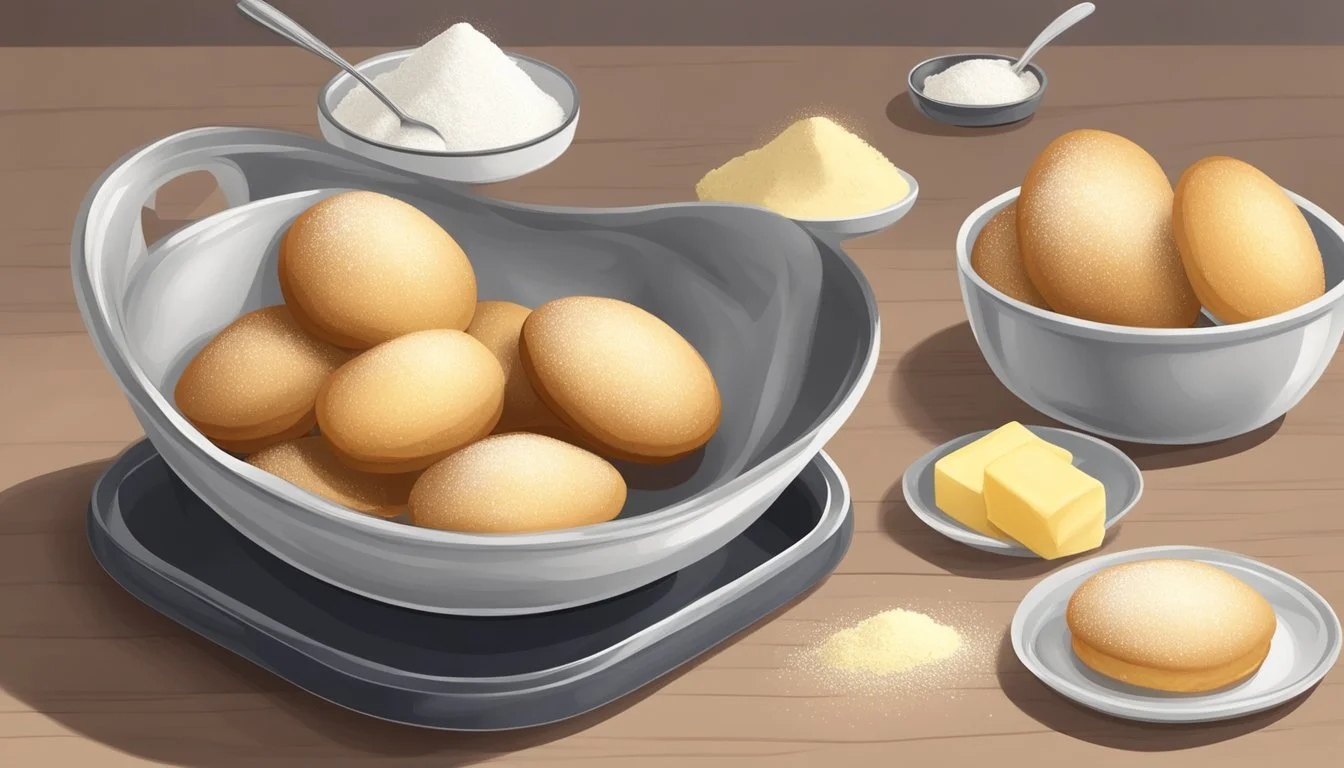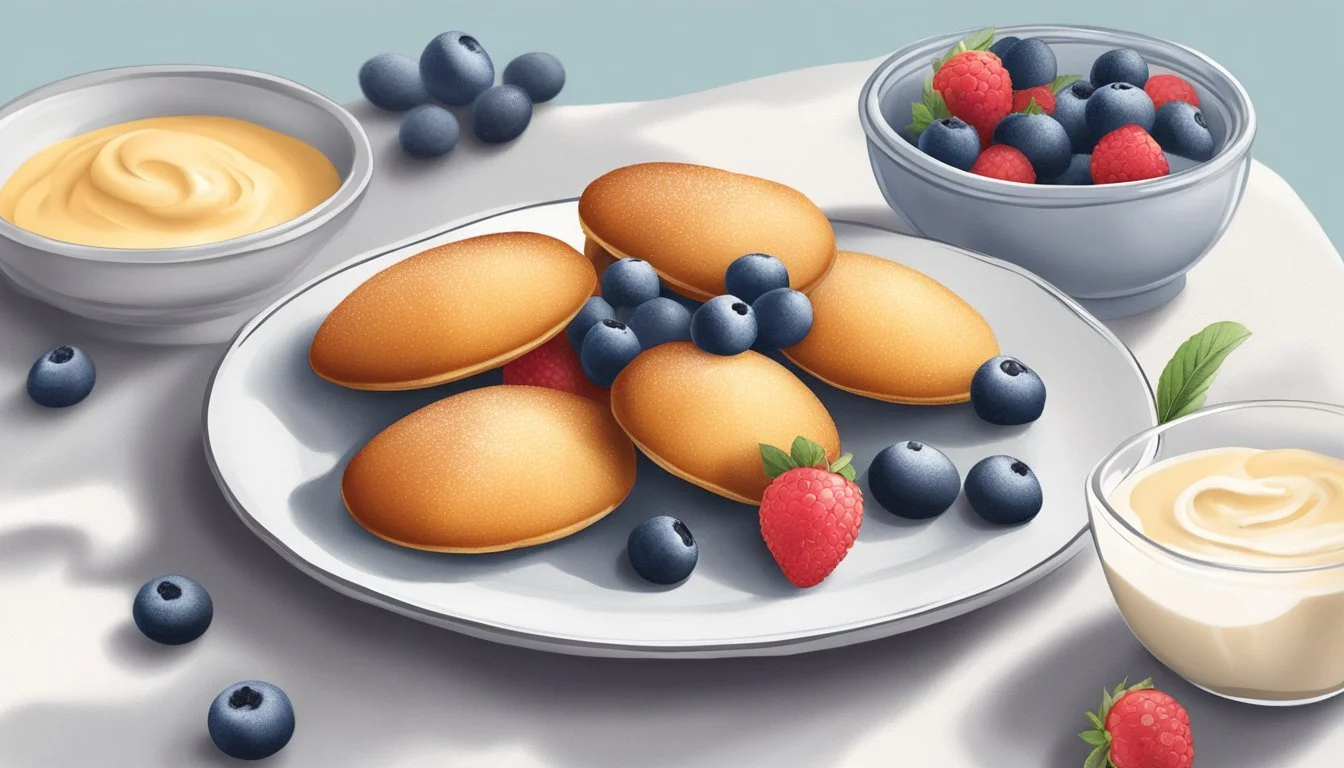Are Madeleines Vegan?
Unveiling the Ingredients of this Classic Treat
Madeleines, a classic French sponge cake with a distinctive shell-like shape, are traditionally made with ingredients that are not vegan-friendly, such as eggs, butter, and sometimes honey. The eggs contribute to the light, airy texture, while the butter provides richness and flavor. Consequently, a traditional madeleine recipe would not align with a vegan diet, which excludes all animal products for ethical, environmental, or health reasons.
However, the increasing demand for plant-based alternatives has led to the creation of vegan versions of many classic dishes, including madeleines. Vegan madeleines substitute the animal-derived ingredients with plant-based alternatives such as dairy-free milk, vegan butter or oils, and binding agents like flaxseed or aquafaba to emulate the texture and rise that eggs would typically provide. The result is a treat that maintains the essence of the traditional madeleine while adhering to vegan principles.
These adaptations allow those following a vegan lifestyle to enjoy madeleines without compromising their dietary choices. The availability of a variety of plant-based ingredients enables bakers to produce a vegan madeleine that rivals the taste and texture of its non-vegan counterpart, thus bridging the gap between gourmet tradition and modern dietary preferences.
What Are Madeleines?
Madeleines are traditional French sponge cakes known for their distinctive shell-like shape. They are often enjoyed as a dessert or a snack and have roots deep in French culinary history.
Historical Background
Madeleines are said to have originated in the Lorraine region of France. The name "madeleine" is believed to have been named after Madeleine Paulmier, a cook for the Duke of Lorraine in the 18th century. These petite treats have since become a staple in French-inspired patisseries around the world, and their history adds to the indulgence of savoring each small cake.
Characteristic Features
Shape: Madeleines are characterized by their unique shell shape, which is achieved by baking the batter in a special madeleine pan with shell-shaped depressions.
Texture: A signature feature of these cakes is the small hump that forms on the opposite side of the shell impression, a result of the baking process which represents a well-made madeleine.
Following are the typical features of Madeleines:
Flavor: They are lightly sweetened and can sometimes include lemon zest for a subtle citrus flavor.
Size: Madeleines are petite in size, making them ideal as a light dessert or a delightful accompaniment with tea or coffee.
Consistency: They typically have a soft, airy crumb that is slightly spongier than a traditional cake.
Understanding Veganism
Veganism is more than a diet; it's a comprehensive lifestyle choice that excludes the use of animal products and by-products. This section will outline the core principles of a vegan diet and identify common ingredients that are not considered vegan.
Vegan Diet Fundamentals
A vegan diet consists of only plant-derived foods. Individuals following this diet avoid all animal products including meat, dairy, and eggs. They rely on a variety of plant-based alternatives to meet nutritional needs. Plant-based milks, such as almond, soy, and oat milk, serve as common substitutes for dairy milk. Vegan butter is made from plant-based oils and is a popular dairy-free option, often used in cooking and baking to replace traditional butter. To ensure a balanced diet, vegans incorporate a diverse range of fruits, vegetables, legumes, whole grains, nuts, and seeds.
Key Components of a Vegan Diet:
Fruits and vegetables
Legumes (beans, lentils, peas)
Nuts and seeds
Whole grains (brown rice, oats)
Plant-based milks (soy, almond, oat)
Vegan butter and oils
Common Non-Vegan Ingredients
When transitioning to a vegan diet, it is crucial to be aware of ingredients commonly found in foods that are not vegan-friendly. Eggs and butter are widespread in baked goods, such as madeleines, which means traditional recipes for these items are not suitable for vegans. Other non-vegan ingredients to be cautious of include:
Dairy products: milk, cheese, yogurt, and whey
Animal-derived additives: gelatin, casein, and some forms of vitamin D3
Non-Vegan Ingredient Vegan Alternatives Milk Non-dairy milk (soy, oat) Butter Vegan butter Eggs Apple sauce, flax seeds
Vegans must diligently check labels and ingredients to avoid these non-vegan items. Manufacturers are increasingly providing clearer labeling to help identify vegan-friendly products.
Essential Ingredients for Vegan Madeleines
Crafting vegan madeleines requires substituting traditional ingredients with plant-based alternatives. It involves thoughtful consideration of each component to achieve the delicate texture and flavor of the classic madeleine.
Choice of Flours
The foundation of vegan madeleines is a flour base, typically all-purpose flour for its neutral taste and ability to create a light, spongy texture. For individuals with gluten sensitivities, a gluten-free flour blend can be used as an alternative. Consistency is key, so when using different types of flour, one might need to adjust liquid quantities to achieve the right batter consistency.
Sweeteners and Flavor Enhancers
Plant-based sweeteners, such as sugar or coconut sugar, infuse sweetness into madeleines. Enhancing the flavor profile can be accomplished with natural extracts, including vanilla extract, almond extract, or citrus zests like lemon zest and orange zest. These ingredients not only add depth of flavor but also contribute to the signature aroma of the cakes.
Leavening and Binding Agents
Proper leavening is essential for the fluffy texture of madeleines. Baking powder is a common vegan choice, as it does not require acidic components to activate and helps the batter to rise effectively. To bind ingredients without eggs, options include vegan yogurt or a thick non-dairy milk, which provide moisture and help maintain the structure of the madeleines. Salt is also added to balance the sweet flavors and enhance the overall taste.
Preparing Vegan Madeleines
When preparing vegan madeleines, the focus is on substituting non-vegan ingredients with plant-based alternatives, utilizing precise baking techniques, and ensuring the right texture and consistency for a perfect tender and airy treat.
Substituting Non-Vegan Ingredients
Traditional madeleine recipes use eggs and butter, but vegan baking finds alternatives to achieve a similar final product. To replicate the moisture eggs provide, options like applesauce or vegan yogurt can be used. Vegan butter or coconut oil serves as a substitute for butter. When choosing plant-based milks, soy or almond milk often work well, but make sure they are unsweetened to control the recipe's sugar content. If aiming for a gluten-free version, a gluten-free flour blend with a bit of cornstarch can replace all-purpose flour to maintain the structure that gluten ordinarily provides.
Baking Techniques
Properly preheating the oven is crucial - temperatures typically range from 175°C (347°F) to 220°C (430°F). It is important to grease the madeleine pan with vegan butter or olive oil spray to prevent sticking. For madeleines to rise adequately, a combination of baking powder and baking soda often works in tandem. Ensure that these leavening agents are fresh for the best result.
Instructions for the actual baking process require meticulous attention to detail. Over or under-mixing the batter can dramatically affect the outcome with resulted madeleines being too dense or failing to rise. A light hand when folding together the wet and dry ingredients helps retain air and contributes to a fluffy texture.
Texture and Consistency Tips
The batter's consistency is key to achieving the characteristic airy and tender crumb of madeleines. Once the wet and dry ingredients are combined, the batter should be thick but smooth. Refrigeration helps with the batter's stability; it should be chilled until cold to the touch, which can range from one hour to overnight. When scooping the batter into the molds, filling them to about three-quarters ensures the madeleines have enough space to expand and develop their signature hump.
Complementary Pairings and Serving Suggestions
When enjoying vegan madeleines, pairing them with suitable beverages and choosing the right toppings can enhance their flavors. A mindful selection can turn a simple snack into an exquisite culinary experience suitable for any part of the day.
Drinks to Accompany Madeleines
Tea: A classic afternoon tea pairs excellently with madeleines, providing a warm and soothing contrast to the sweet treat. Herbal or green teas are particularly fitting.
Rating: Tea is highly recommended for an authentic experience.
Notes: Opt for light teas to avoid overshadowing the delicate flavor of the madeleines.
Coffee: For those who prefer a rich beverage, coffee can complement the sweetness of the madeleines with its robust and bitter notes.
Rating: Coffee is suitable for morning or desserts with a bolder taste.
Notes: Choose a medium roast to maintain a balance between the coffee's bitterness and the madeleine's sweetness.
Vegan Toppings and Decorations
Sugar and Glazes:
Powdered Sugar: A light dusting provides a minimal yet visually appealing finish.
Lemon Glaze: Combining powdered sugar with lemon juice can create a zesty glaze that is both tangy and refreshing.
Fruit-Based Options:
Blueberry: A fresh or compote topping of blueberries offers a natural sweetness and a vibrant pop of color.
Orange: Infusing madeleines with an orange zest or serving with a side of chilled orange segments can give a citrusy twist.
Chocolate and Coconut:
Chocolate: Drizzle or dip madeleines in melted dark chocolate for a rich, decadent addition.
Coconut: Sprinkling shredded coconut adds a tropical note and an interesting texture contrast.
Additional Decorations:
Sprinkles: A sprinkle of vegan-friendly colored decorations can make the madeleines visually appealing, especially for festive occasions.
Cranberry: Dried cranberries provide a tart contrast and a chewy texture, suitable for those seeking a more complex flavor profile.
Storage Tip: To keep madeleines fresh, they should be stored in an airtight container. They can be left at room temperature if consumed within a couple of days or kept in the fridge to extend their shelf life. For long-term storage, freezing is effective, but one must ensure to wrap them carefully to prevent freezer burn.
Storing and Preservation
When dealing with vegan madeleines, proper storage is paramount to maintain their freshness and texture. Equally important is choosing the right methods for short-term enjoyment or long-term keeping.
Short-Term Storage
For immediate consumption within a couple of days, storing vegan madeleines in an airtight container is crucial to prevent them from drying out. They should be kept at room temperature, away from direct sunlight and any source of moisture. If the madeleines have a filling, it may affect their shelf life, so consumers should consider consuming them more quickly to enjoy optimal freshness.
Freezing and Long-Term Keeping
To extend the enjoyment of vegan madeleines, freezing is an effective method. They should be laid out on a baking sheet and placed in the freezer. Once fully frozen, transfer the madeleines to a sealed airtight container or a freezer-safe bag. They can be stored this way for up to three months. When one is ready to eat them, simply thawing at room temperature will suffice. For those willing to share the enjoyment of stored madeleines, they make excellent content for Instagram and Pinterest where visual presentation of these delicate treats is greatly appreciated.
Troubleshooting Common Issues
When baking vegan madeleines, one may encounter specific issues unique to their delicate nature and vegan adaptations. This section provides advice on resolving baking problems and ensuring those characteristic qualities—like the shell shape and the iconic bump—are achieved.
Dealing With Baking Mishaps
Undercooked Madeleines: If madeleines emerge pale and underbaked, the baking time may need an extension. Ensure the oven is preheated correctly, typically at 347°F (175°C), and allow the madeleines to bake until they're golden brown.
Overcooked Madeleines: On the flip side, an overcooked madeleine loses its soft texture and can have a burnt taste. They should be monitored closely, particularly towards the end of the standard 10-12 minutes baking time, to prevent over-browning.
Tips for Perfect Vegan Madeleines
Achieving the Bump: The characteristic bump is a coveted feature of traditional madeleines. For vegan versions, chilling the batter for at least an hour allows the cold batter to react with the heat, creating the desired rise.
Shell Shape and Texture: A well-greased madeleine pan is vital for that classic shell shape. Vegan butter or coconut oil can help. Filling each mold appropriately, not too full nor too shallow, ensures the ideal form upon baking.
Using these tips and solutions should lead to successfully baking vegan madeleines with a high rating in both taste and aesthetics.
Further Insights and Variations
When exploring the world of vegan madeleines, recipe versatility becomes key, and the ripple effect of this confectionery delight across social media is undeniable.
Recipe Adaptations
Vegan madeleines allow for a variety of non-dairy milks, such as almond milk, soy milk, or oat milk, to impart their unique flavors. They're typically integrated with a non-dairy yogurt to achieve the desired consistency. When selecting a madeleine pan, options include a traditional metal pan or a non-stick madeleine mold, each offering different benefits in terms of heat conductivity and release. A medium bowl is the starting point where ingredients like vanilla bean paste substitute traditional extracts to infuse the French cake with the sought-after vanilla flavor. These adaptations are crucial to achieving the familiar texture and flavor of a classic madeleine while adhering to dairy-free principles.
Non-Dairy Milks: Choice is plentiful with almond, soy, and oat milks leading as popular options.
Madeleine Pans: Metal and non-stick molds are both suitable, the choice depends on personal preference and available kitchen tools.
Flavors and Ingredients: Vanilla bean paste, dairy-free milk and yogurt, and quality oils contribute to a rich taste and proper cake structure.
Cultural Impact and Social Media
The popularity of vegan madeleines is evident on platforms such as Pinterest, Instagram, and Facebook. These platforms are filled with images and recipes that show the versatility and appeal of this afternoon treat. The cultural impact is measured by post engagement, with high ratings and positive notes from followers indicating a widespread fondness for the delicacy.
Pinterest: Abundant with various recipes and design inspiration for crafting the perfect vegan madeleine.
Instagram: Visual testimonies of the final product, often capturing the golden-brown edge and tender crumb of these French cakes.
Facebook: A community space where bakers share experiences, advice, and adjustments to recipes for personal improvement or dietary needs.
Conclusion
Vegan madeleines are not only possible but can also cater to the delicate texture and flavor profile characteristic of traditional French madeleines. Adapting a classic recipe to suit a vegan diet involves the artful substitution of animal-based ingredients with plant-based alternatives. For instance, dairy milk is replaced by almond or soy milk, and butter by coconut oil or vegan butter.
To achieve the iconic taste, enhancements such as lemon zest play a crucial role. It infuses the batter with a bright citrus note that complements the sweetness of the cake. A well-crafted vegan madeleine recipe honors the light, spongy texture and the signature hump on the back of each cake.
Key Components in Vegan Madeleine Recipes:
Wet Ingredients: Vegan butter (melted and cooled), non-dairy milk, and sometimes applesauce or vegan yogurt for moisture.
Dry Ingredients: Flour (sifted), sugar, baking powder, and sea salt.
Flavorings: Pure vanilla extract and lemon zest for a fresh, aromatic touch.
It is essential to grease the madeleine pan accurately to ensure the cakes release easily and gain the perfect shell-shape. Olive oil spray or a light coating of coconut oil work effectively.
Ultimately, precision in technique and quality of ingredients guarantee the success of vegan madeleines. They can stand proudly alongside their traditional counterparts, offering a compassionate and indulgent experience that aligns with vegan ethics.

